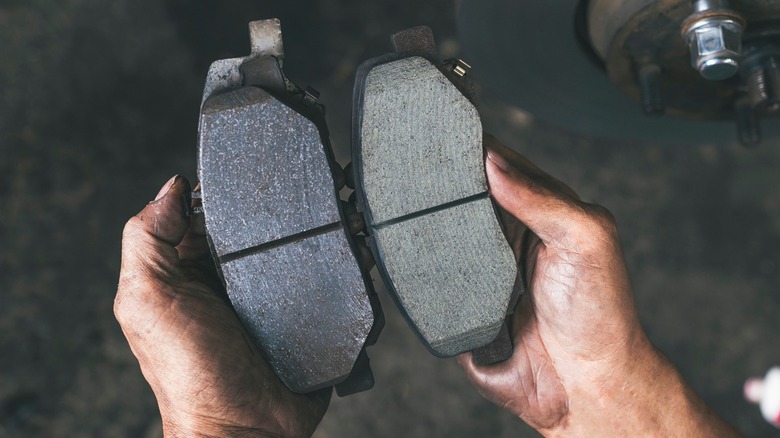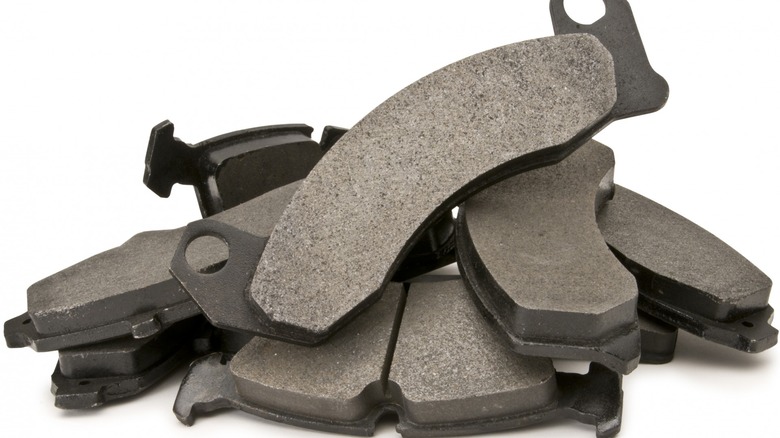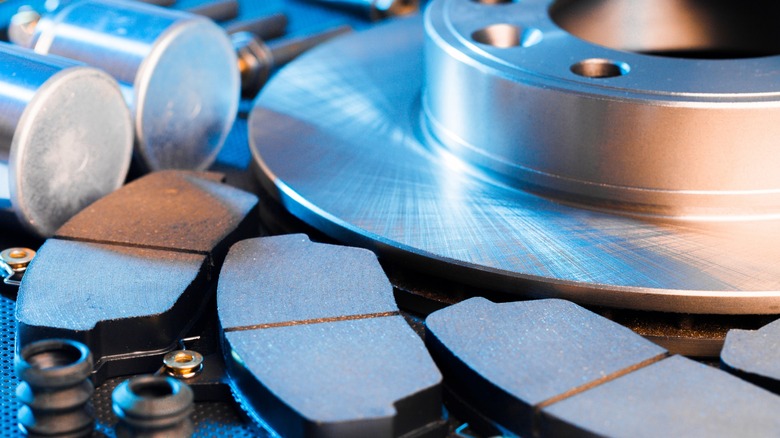How Often Do You Really Need To Replace Your Car's Brake Pads?
You don't have to be a car enthusiast to know you should change your brake pads long before you hear that all-too-familiar metal-on-metal grind. That's the sound of potentially costing yourself quite a bit more money than a simple pad swap. Improper brake maintenance can lead to disastrous results ranging from destroying your rotors well ahead of them needing to be replaced all the way to over-extending the pistons in your brake calipers, necessitating the replacement of the entire caliper.
Not only can this add a hefty chunk of change, turning your maintenance into a repair, but it also takes far more time to remedy. Barring outside variables like a rock wedged between your brake pad and the brake rotor or the pad breaking free from the backplate, your car's brakes can last an extremely long time. So, how often do you really need to replace them? Ultimately, that depends on what car you've got and what type of brake pads it has. Let's dive in.
Types of brake pads and when to change them
A general rule of thumb is that brakes should be replaced on city-driven cars around every 40,000 miles. In addition, cars that spend most of their time on the highway should be replaced every 60,000 to 80,000 miles. Again, though, that is just a general rule of thumb. Varying types of brake pads last different amounts of time and replacing your brake pads prematurely is a waste of money. So, where do we land?
First, identify the types of brake pads that are on your vehicle. If you're not the original owner or haven't replaced the pads before, this can be an extremely difficult task. If you're in the dark, a mechanic should be able to tell you what your pad material is — just be on the lookout for ones who may overcharge you.
There are three main types of brake pad materials. Organic pad materials are generally the cheapest and are made from non-metallic composites. Typically, they are quiet. However, they wear much faster than metallic or semi-metallic pads. On the flip side, metallic or semi-metallic pads are more durable and last longer, but they can be noisier than organic pads and can cause damage to your rotors. Finally, ceramic pads last the longest and offer superior stopping power. The downside to ceramic pads, though, is that they are quite expensive. If you're looking for performance, ceramic pads are your best bet.
What if my pads are fine at 40,000 miles?
What should you do if your brake pads are still fine at 40,000 miles? That's the tough call. With the nearly endless supply of brake pad manufacturers, car makes and models, and pad materials, there's no definitive answer on the timeframe that your brakes should be checked. That being said, using the general mileage rule-of-thumb serves as a great place to check your brake pads.
When new, brake pads have about 12mm or a half-inch of pad material. You should replace your pads when they reach two or three millimeters or about an eighth of an inch. Measuring your pads is a simple at-home procedure, but if you're not comfortable doing it yourself, taking it to a trustworthy mechanic should be relatively inexpensive to get a basic brake inspection.
Many modern cars also have sensors to alert you when your pad material is getting low. Overall, as is true with most vehicle maintenance, keeping a watchful eye on your car's components to ensure everything is within spec is the key to knowing exactly when you should change your brake pads.


